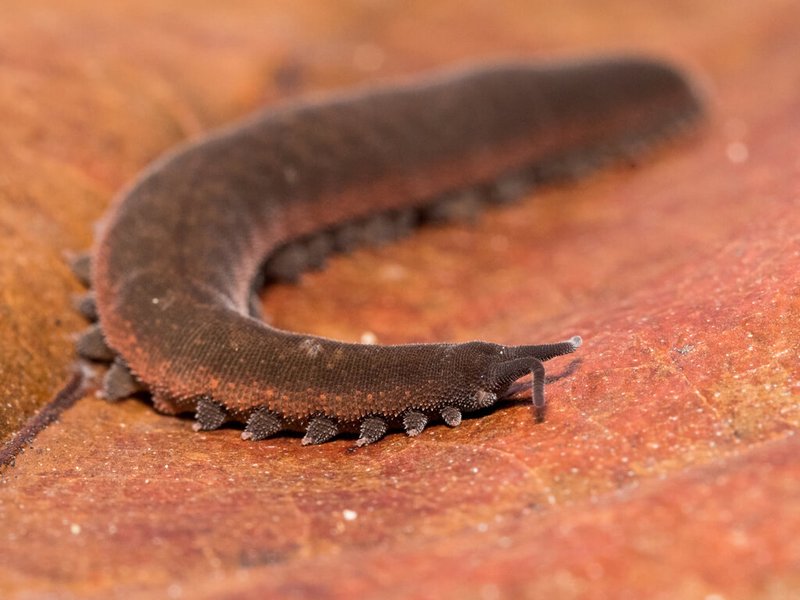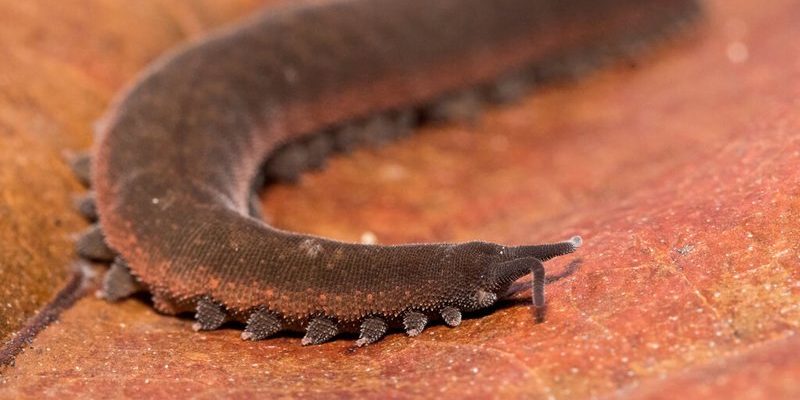
Velvet worms, known for their soft, velvety skin and unique hunting methods, offer a window into the complexities of animal relationships. Their behaviors might remind you of human dynamics, where communication, cooperation, and even a bit of drama play significant roles. Let’s dive into the world of velvet worm pair bonding and explore how researchers unveil the secrets of these extraordinary connections.
The Basics of Velvet Worms
Velvet worms, scientifically called *Onychophora*, are a group of worms that strike a balance between worms and insects. They’re often described as “living fossils” due to their ancient lineage, which stretches back hundreds of millions of years. Imagine a creature that looks like it’s straight out of the Jurassic period, with a soft body covered in tiny, hair-like structures called papillae.
One of the most captivating aspects of velvet worms is their unique method of hunting. Instead of using speed or strength, they shoot a sticky slime to trap their prey. This hunting technique, combined with their social behaviors, makes them particularly interesting for researchers studying animal relationships.
So why focus on pair bonding? Well, understanding how these creatures form bonds can reveal insights into animal behavior more broadly—like how cooperation and attachment evolve in the animal kingdom.
The Process of Pair Bonding
When velvet worms form a pair bond, it’s not just a casual fling. Researchers observe a series of behaviors that signal a deeper connection. Initially, during courtship, the male and female engage in a ritual dance, a delicate sway that showcases their compatibility. This is similar to a human couple going out on a date to see if there’s chemistry.
After the initial courtship, the bond strengthens through grooming, where the worms clean each other’s bodies. Honestly, it’s like a sweet little spa day, but for worms! Grooming helps maintain hygiene and solidifies their partnership—an essential aspect of their relationship. It’s a pretty intimate act, and it shows that these creatures care for one another.
You might be wondering how often these bonds last. Unlike some species that only mate briefly and then part ways, velvet worms can remain bonded for extended periods. This long-term association allows them to work together when hunting or navigating their environments, increasing their chances of survival.
Communication is vital in any relationship, and velvet worms are no exception. They use a mix of chemical signals and physical interactions to convey messages. Imagine two friends who can recognize each other by subtle cues—like a knowing glance.
When it comes to velvet worms, they release pheromones that allow them to express readiness to mate or signal distress. This chemical communication helps them stay in sync with one another, ensuring that they’re on the same page when it comes to reproduction or responding to threats.
Interactions between partners can also be seen through their body language. For instance, if one worm feels threatened, it may seek comfort from its partner. This behavior is quite similar to how humans may lean on a loved one during stressful times. The velvet worms’ ability to respond to each other’s emotional cues speaks volumes about the bond they share.
The Role of Environment in Pair Bonding
The environment plays a significant role in how velvet worms build their relationships. These creatures thrive in moist, leafy habitats, which provide not only safety from predators but also ample opportunities for mating and bonding. Think of their environment as a cozy café where a couple can nurture their relationship.
In dense foliage, males and females can easily find each other, facilitating bonding behaviors like grooming and communication. Additionally, the microclimate of their habitat helps maintain moisture levels, which are crucial for their survival. When they have a healthy environment, the stability it brings can enhance the strength of their pair bond.
However, changes in their habitat—like deforestation or climate change—can disrupt these relationships. A shift in environment can lead to stress and tension, making it harder for them to communicate and bond effectively. This highlights the importance of conservation efforts to protect their habitats, not just for the worms, but for understanding broader ecological dynamics.
Pair Bonding and Reproductive Success
Now, let’s talk about how these pair bonds relate to reproductive success. In the animal kingdom, strong pair bonds often lead to better outcomes for offspring. Velvet worms are no different; their partnerships increase the survival rate of their young.
When a bonded pair successfully mates, the female is more likely to produce a number of viable eggs. She can nurture the eggs better when she has a supportive partner, allowing her to focus on her offspring’s survival. This teamwork boosts the chances of raising healthy velvet worm babies.
Interestingly, researchers found that pairs with stronger bonds tend to have more successful mating sessions. In contrast, solitary worms or those in less stable relationships may struggle to reproduce. This relationship dynamic emphasizes the significance of social structures in ensuring the continuation of their species.
The Future of Velvet Worm Research
As we learn more about velvet worms, the future of their study holds exciting potential. Research into their pair bonding behaviors can lead to broader insights into animal social dynamics, including how partnerships form and thrive in various species.
Moreover, the understanding of these small creatures may help us appreciate the intricate relationships found in the animal kingdom as a whole. Scientists are using advanced techniques, like genetic analysis and behavioral observation, to unravel even more mysteries surrounding their bonding behaviors.
On a practical level, these studies can also influence conservation efforts. By recognizing how environmental factors affect their pair bonding and overall survival, we can better direct efforts to protect their habitats. A healthier world for velvet worms can lead to a more balanced ecosystem.
Velvet worms are more than just fascinating creatures; they’re a window into the complexities of animal relationships. Their pair bonding behaviors—filled with courtship rituals, grooming, and communication—are a testament to the vast emotional landscapes found in nature. By studying these interactions, we gain a deeper understanding of not just velvet worms but the crucial bonds that connect all living things.
Whether you’re a science enthusiast or just curious about the quirks of nature, the story of velvet worm pair bonding reminds us that love and companionship have deep roots in the animal kingdom. As we continue to explore these connections, we open doors to new discoveries that enrich our understanding of life itself. So next time you think about relationships—whether human or animal—remember that even the smallest creatures have tales of companionship worth telling.

